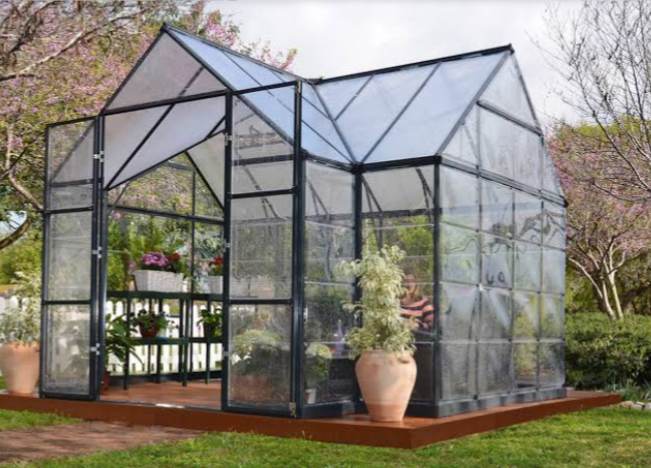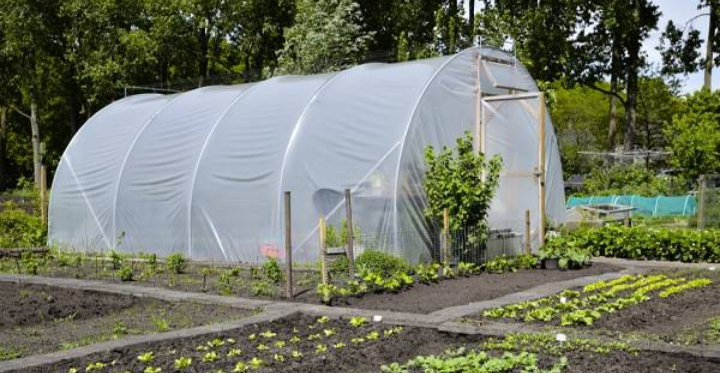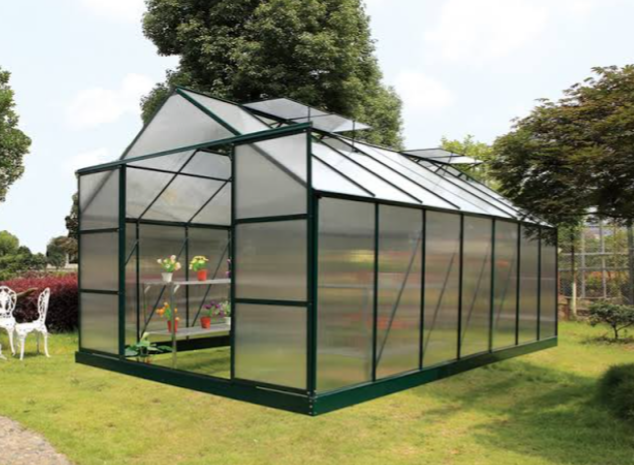
Greenhouse is a building designed for the protection of tender or out-of-season plants against excessive cold or heat. It is a a controlled environment where crops are protected from harsh weather conditions and raising of exotic plants that cannot survive under the indigenous countries climatic conditions. It is also used as nurseries to raise propagule.
Large greenhouses are important in agriculture and horticulture and for botanical science, while smaller structures are commonly used by hobbyists, collectors, and home gardeners. The greenhouse is usually made of glass- or plastic-enclosed framed structure by the sides and roofs. The short walls are made of concretes along side the flooring. Most times, the floor are left bare for making planting beds.
Nowadays, with advancement in technology, other materials are used for constructing green houses. Glass has been the traditional glazing material, but now, plastic films, such as polyethylene or polyvinyl, and fibreglass are common. The framing of the structures are made of aluminum, galvanized steel, or such woods as redwood, cedar, or cypress.
Greenhouse are used for the production of fruits, vegetables, flowers, and any other plants that require special conditions of temperature.
Heat is supplied to the greenhouse by the Sun and partly by artificial means, such as circulating steam, hot water, or hot air.
The green house need proper ventilation to prevent the building from becoming too hot or too cold. Poor ventilation can harm the plants. Therefore, ventilation systems are needed. The ventilation systems can be open roof type, which can be operated mechanically or automatically, and end-wall openings, through which electric fans draw air and circulate it throughout the interior.
CATEGORIES OF GREEN HOUSE.
This categorisation is based on temperature requirements of the plants grown during nighttime hours in greenhouse. There are two categories
1. cool greenhouse
2. Hot greenhouse
COOL GREEN HOUSE
In the cool greenhouse, the nighttime temperature falls to about 7–10 °C (45–50 °F). It is found in the temperate regions. Temperate crops are raised in it.
WARM GREENHOUSE
In the warm greenhouse, the nighttime temperature rises to about 10–13 °C (50–55 °F). It is common in tropical region with hot weather conditions. Plants like orchids, roses, ferns, passionflowers, palms and cacti and other succulents plants can be raised in it.
PURPOSES OF GREEN HOUSE
1. To protecte the plants from unfavourable weather condition
2. To curb the activities of pests and diseases that may affect crop growth and yield
3. To have a better agricultural practices and output.
4. Greenhouse used as nurseries are used to raise seedlings for sale
5. Floriculturist use it to raise flowers for sale
6. Farmers uses it to raise all year round crops like pepper, tomatoes, vegetables etc using irrigation systems.
There are different types of structures that resemble the greenhouse that are not green house. Such include polytunnel.
POLYTUNNEL
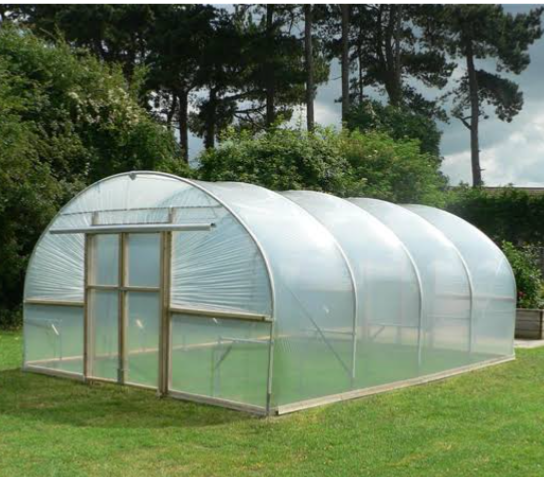
POLYTURNNEL is also known as a polyhouse, hoop greenhouse or hoophouse, grow tunnel or high tunnel.
It is like a greenhouse but it has different structural materials, it is constructed differently, have different uses, and it has different functions.
DIFFERENCES BETWEEN POLYTUNNEL AND GREEN HOUSE
1. Green house has glazing materials, it is glassy that one can see through it. It also allows light transmission through it to reach the plants. The glass is a poor insulator therefore not adviceable for use in cooler regions. Also polycarbonate can be used. It is a plastic material that is thick and durable unlike glass that can easily shatter if hitted by a stony object, it has good insulating properties. With heater, the inside environment becomes more stable, it can be made up to 5 Walled thick. POLYTURNNEL on the other hand are covered with polyethylene sheets which is not thick like glazy materials. The best quality is that with about 6 mm thick. They are less expensive and need resheeting every 5 to 8 years depending on the tier on it. But the good news is that special polyethylenes are produced to patch it up. Polytunnel must not be sited where lots of tree branches fall as this can damage the polyethylene nylon.
2. STYLE IN DESIGN
One of the commonest Polytunnel structures is quonset style, and guotic arch, etc while there are different greenhouse design structures. Refer to the types of green house below.
3. CLIMATE CONTROL : the environment in both greenhouse and polytunnels are controlled. The materials used for green house such as glass is a poor insulator while polycarbonate is a good insulator depending on its thick layers. While polyethylene used for polytunnels is a good insulator. Also, the effect of sunlight can easily be controlled in polytunnels by using a black polyethylene material. While that in greenhouse is difficult to control.
4. HEATING METHOD
Greenhouse uses glazing type of material such as glass, thickened wall of polycarbonate etc to produce heat in the greenhouse. It’s walls are rigid. While in Polytunnel, the polyethylene keeps it warm, double layer of polyethylene can be done at the time of installation and also can be installed on top, a blower and fan can be installed in it to blow air that inflates the polyethylene.
5. COOLING AND VENTILATION
Greenhouse: small greenhouses uses passive ventilation whereby hot air rises to the top and passes out via the roof or walls. The roof are designed to have roof vents that is used in keeping the roof open. For more ventilation fan, side panels can be used to allow air into the building or by opening the front and back doors.
Polytunnel, relys on the front doors and back doors for ventilation. For bigger Polytunnel structures, polycarbonate roofing with opening vents can be installed which are opened to ventilate the tunnel. Also, side polyethylene with roll ups can be made by the sides of the tunnel.
6. COST
Greenhouses cost more than Polytunnel. Polutunnels are much economical to use due to the material usage.
SIMILARITIES BETWEEN POLYTUNNEL AND GREENHOUSE
1. Whatever is done in greenhouse can be done in Polytunnel. Such as planting, raising propagules and seedlings, and vegetable farming etc
2. Heaters can be installed in both syructures especially at temperate regions
3. Materials like planting tables, benched, planting beds etc can be found in both structures
4. Fans can be installed in both to allow air circulation
5. Both structures possesses two rear doors etc
GREENHOUSE STRUCTURES
1. In greenhouse, the climate can be controlled
2. They have two end doors at both extreme ends
3. Fans can be installed to cool the room or allow air circulation
4. Thickened walls of materials provide heat in the greenhouse
5. Use of polycarbonate helps in insulation and it is durable
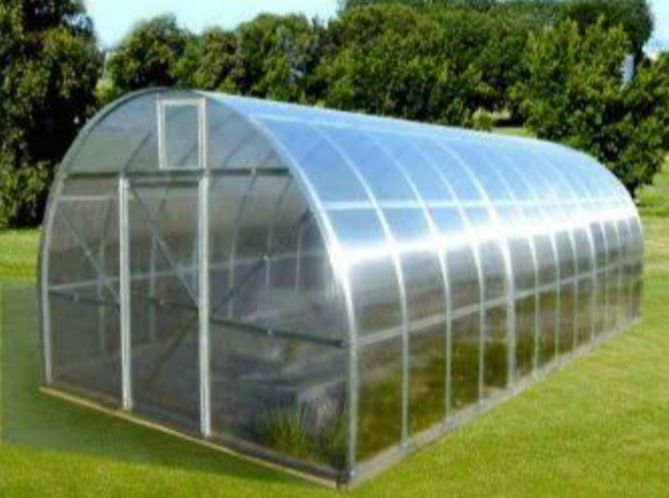
FACTORS TO CONSIDER BEFORE CONSTRUCTION OF GREENHOUSE FARM
The following factors should be considered before building of green house farm:
1. SELECT THE PERFECT LOCATION FOR THE GREENHOUSE : it should be an area that gets plenty of sunlight per day. South facing location ensure the plants get ample light. The green house should not be located under trees as falling branches may damage the materials. Also, wind break trees can be planted about 10m away from the greenhouse. It should also be located near water source.
2. DESIGN AND MATERIAL SELECTION: A simple structure is best for beginners. Materials needed include wood for the frames which forms the skeleton of the greenhouse, plastic or glass for the roof and walls, and concrete or gravel for the foundation. Screws, nails, plant tables, benches, temperature control l systems etc. are needed
3. SOIL AND WATER ANALYSIS : The soil to use in greenhouse for planting must be tested to determine the nutrient status of that soil. And also to make a concise fertilizer recommendation for the crops. Also, water analysis must be carried out to know if the water to use for irrigating the plants is not polluted. Polluted water can introduce diseases to the plants or destroy them.
4. PEST AND DISEASE CONTROL
Pests and diseases should be put to consideration when preparing to set up a greenhouse. Pest and diseases do cause serious damage to crops. Therefore, preventive and control measures should be considered should incase an outbreak occurs. Appropriate pesticides can be used such as organic and chemical pesticides like insecticides, fungicides, nematicides and acaricides etc. should be used.
Antagonistic microbes can also be employed. Treated seeds should be planted. 5. POLLINATORS: The greenhouse is a sealed up structure which gives no room for insect to enter. Pollinators like bees, butterflies, etc can be employed in few numbers to carry out the pollination activities.
6. MARKETING
Marketing strategies should be designed and never wait till harvest time before planning to start marketing the produce. Proper marketing research should be done to know the want of the people in the location, and potential buyers of greenhouse products before starting the greenhouse farming project.
BENEFITS OF A GREENHOUSE
1. ALL YEAR PRODUCTION : Crops can be produced through out the year in greenhouse for sale and consumption
2. SUSTAINABILITY. It contribute to sustainable lifestyle as farmers continue to produce crops without any limit for themselves and fore sale.
3. IT IS REWARDING : farmers can produce crops with their own hands and continue to gain experience from raising of new crops under the system.
4. INTEGRATION: In greenhouse, integrated farming can be practiced. Fish farming can be integrated with crop farming in the greenhouse. 5. Also, other types of farming such as vermiculture, aquaponics, hydroponics etc can be done in greenhouse.
TYPES OF GREEN HOUSE
1. MINI GREENHOUSE . Are greenhouses constructed in main green house.
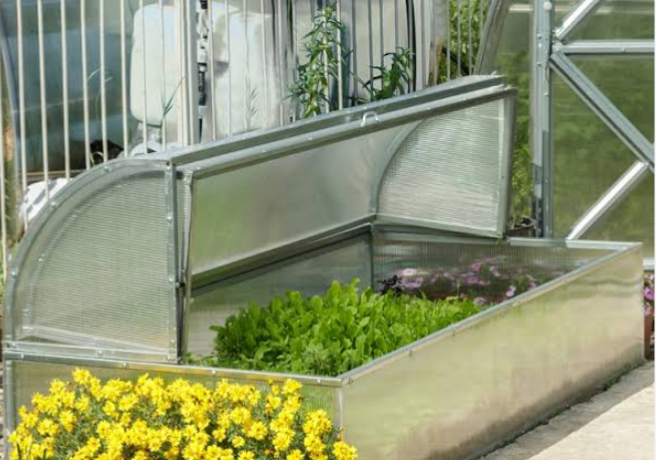
The main greenhouses include:
2. ROUND ARCH GREENHOUSE : The structure is designed to take the shape of an arc. It requires no foundation but poles are erected in the ground to hold the materials at both sides. It gets excellent lightning from morning to evening. It uses single walled or double walled film. Because of the thin walled, they are very expensive to heat. A blower can be installed to keep the film inflated. Also PVC and galvanized tubing can be used as material. It is not adviseable to use this type of green house in temperate regions because of the snow load.
2. GOTHIC ARC GREEN HOUSE : It has good lighten through out the season and it can be recommended for temperate regions because they have excellent snow removal due to the slantness of the roof. It is also expensive to heat up. They are better in structure than the round arch greenhouse.
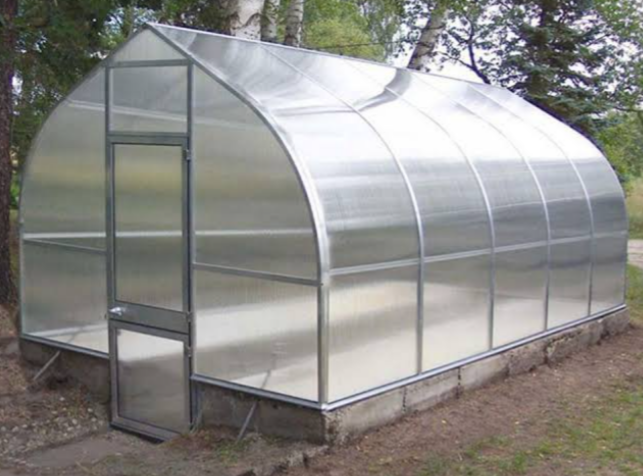
The structure do have a pole holding it at the centre or may poles along the centre path to support the structure. The disadvantage is that the poles reduce the walkway space. Also, a roof cross bar is installed from one end to the other end of the sides of the roof. This helps to distribute the weight of the greenhouse on the bar.
3. TRADITIONAL GREENHOUSE : it is usually large in size. Need engineering design before construction. It is cost effective in construction. They are long term structures used mostly for educational and research purposes. They can be found at research institutes, Agricultural departments in universities, colleges of Agriculture, Agricultural NGOs, government parastatals etc. The buildings can last for years. They are designed to be well ventilated especially through the roof and side walls. They are less expensive in terms of heat supply. They need a strong foundation,
4. GUTTER CONNECT GREENHOUSE: This is like a double traditional green houses without the middle wall. They are used for large planting operations. The major disadvantage of this greenhouse is that weight can be built on the roof where the two buildings meet. Such weights can be rainwater, snow or debris blown by wind. It is cost effective than all other greenhouses.
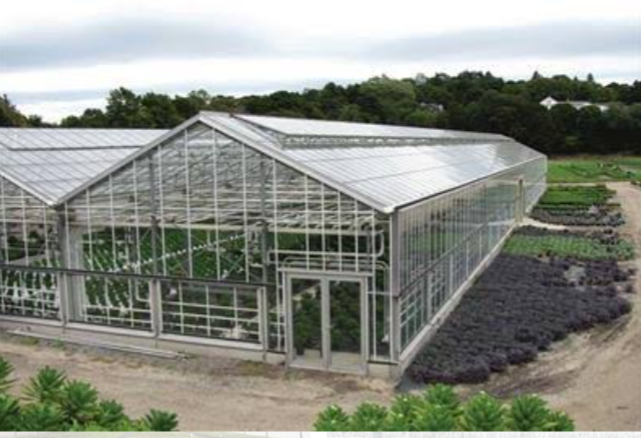
5. GOTHIC/ TRADITIONAL GREENHOUSE: It has an arc shape roof with staigth walls. A cross bar is used to hold the weight of the roof. They need no foundations but poles to hold the sides in shape. They are well ventilated like the traditional greenhouse. But in addition to the side, a roll up vent can be installed to roll up the side walls of the building.
6. 33′ DOME: They have structure like an arc with foundations. Weights do not build up on this type of greenhouse. They are usually made of polycarbonates because the material can easily be cut to form the arc shape. They are usually used for commercial purposes. They do not require foundations to construct.
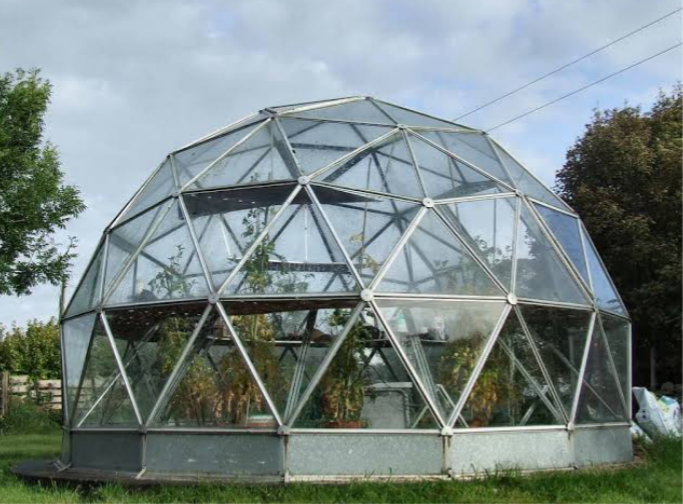
7. 33′ vs 42′ DOME: 33’=10m and 42’=12.8m it is a double dome with the 33′ structure inside and the 42′ structure outside. It has enough head space on top.
Other types of greenhouse include the walipini greenhouse. It has concrete wall. And it is built underground with areal roof constructed a little above ground level. Passive solar greenhouse, PVC Greenhouse also called DIY greenhouse, Screen greenhouse, Wooden Greenhouse, Chinese greenhouse (It has a beam roof structure.), Quonset or high tunnel green house, (this is the most common type of greenhouse), etc
MATERIALS TO USE FOR GREEN HOUSE
The materials to use for green house must possess the following properties. They must be transparent, translucent, durable, low cost, and longevity etc.
The materials include glass, wood, polycarbonate, polyethylene, , solex, and corrugated panels etc.
SOME CROPS THAT CAN BE GROWN IN GREEN HOUSE
Chili pepper, tomatoes, Sweet Corn, bell pepper,
Broccoli, Cauliflower, Chinese Cabbage
Parsley, lettuce, flowers, Cucumber etc.
ADVANTAGES OF GREENHOUSE FARMING
The advantages of greenhouse farming are:

1. GREENHOUSE FARMING IS HIGH YIELDING : The yield realisable from a greenhouse can be higher than yield from a field farm. This is because of the intensive care and proper management given to the crops.
2. FREE PEST AND DISEASES INFECTION: Crops grown in greenhouses are usually free of pests and diseases unlike those grown in the field. Good farming practices like pest and disease preventive measures are usually put in place. And peradventure there is pest infestation and disease infection, such crops are easily and quickly identified and taken care off before a total outbreak.
3. ENVIRONMENTAL CONTROL: Temperature and humidity can be adjusted in greenhouses. Most exotic species that cannot grow under the weather conditions can survive in greenhouse. Therefore, the greenhouse farmer can grow any crops that he/she would not have been able to grow ordinarily in the open field.
4. MIXED CROPPING PRACTICES: Several types of crops can be planted at the same in the greenhouse on different plot sections. More crops can be planted in greenhouses, thereby improving the plant density and yield. This will increase the farmers income.
5. EFFICIENT USAGE OF RESOURCES : There is efficiency in the use of water and nutrients in a greenhouse compared to field cultivation. Irrigation is used and calculated amount of fertilisers are applied. Therefore, no wastage of resources.
6. INTEGRATED FARMING : integrated farming can be practiced in the greenhouse. Nowadays farmers practice aquaponics crop-fish farming in greenhouse system.
7. Other types of modern farming such as vermiculture, Vermicomposting, composting and hydroponics are done in greenhouse. etc
DISADVANTAGES OF GREENHOUSE FARMING
The disadvantages of greenhouse farming are:
1. COST EFFECTIVE : Greenhouses can be costly to construct. And immediate return to recoup back the investment may take a while.
2. EXPERTISE KNOWLEDGE : A greenhouse needs some expertise and technical knowhow for successful operation. The greenhouse farmer needs to have knowledge about indoor climatic control, crop production, water and fertilizers requirements etc to achieve a successful farming operation.
In conclusion,Every great planting starts with a little seeds. With patience, hard work and great efforts incorporated with knowledge and skills, you can achieve food security and feed the nation.
